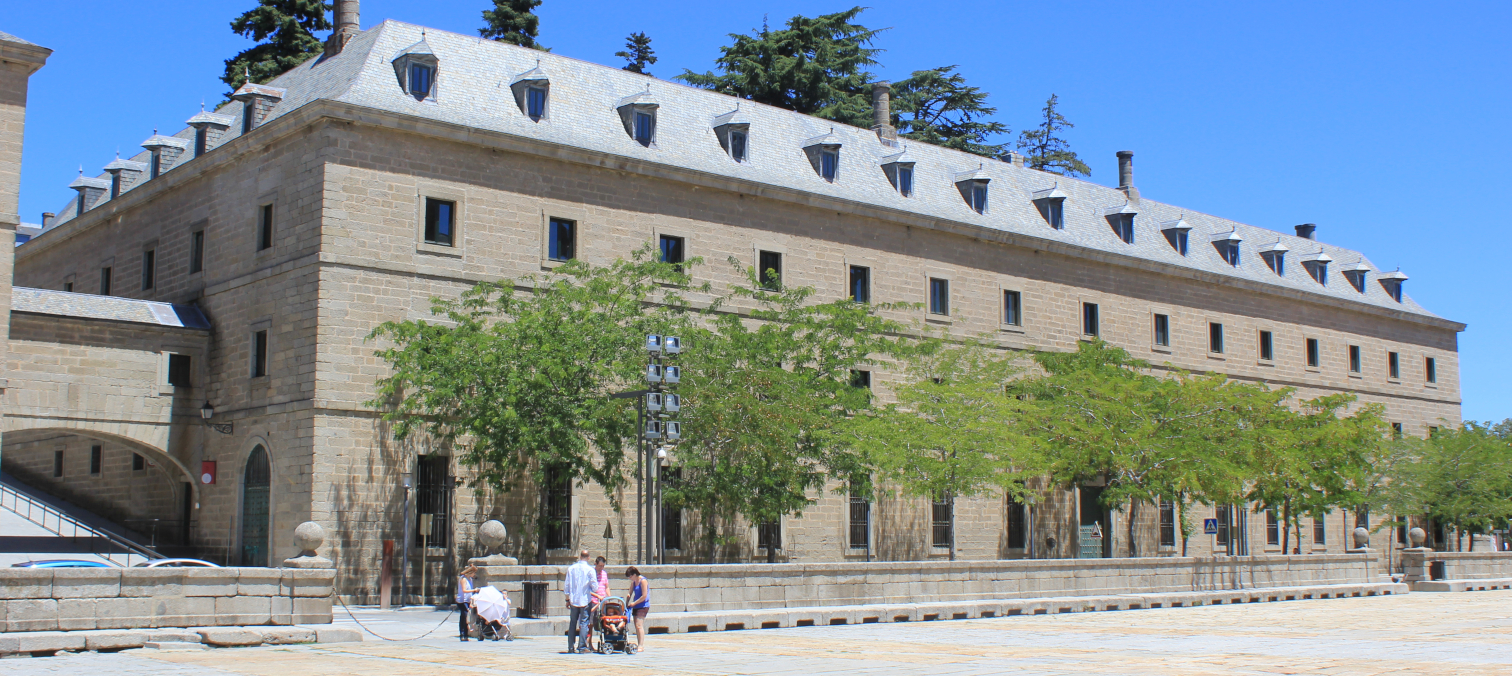Although physically separate, the First and Second House of Trades make up an edifice conceived as a single unit. The concept for the houses arose out of the lack of space at the Monastery for housing all the palace quarters.
Designed by Juan de Herrera, and beyond the walls of the monastery, the work was directed by Herrera and later by Francisco de Mora between 1587 and 1596. Located between the low-level stone esplanades, or the lonja, and the high-level street currently known as Floridablanca, they were a satisfactory solution to the greatly different height levels of these two areas. As a result of this, their façades are of different heights, with three floors giving onto the lonja and two floors facing Floridablanca, leading to two different scales, one of continuous façades similar to the Monastery, and the other where this continuity is broken by three patios for each House, with arcades and square pillars.
In the 19th century the two Houses of Trades were functionally separated, initiating their use for different purposes, a separation that has continued to our time.
At present, the First House of Trades houses the Cultural Centre, the Manuel Andújar Municipal Library, an Exhibition Hall and the Local Tourist Information Office. In the Second House is found a chapel, what was the capilla de los labrantes (chapel of the labourers), now the Santuario de Nuestra Señora de Gracia, and it also holds the “Padre Antonio Soler” Music School, belonging to the Madrid regional government.
In the central courtyard of the First House of Offices stand two magnificent Spanish firs, while the left-hand courtyard viewed from Floridablanca boasts a beautiful Himalayan cedar.
A plaque was unveiled at the First House of Offices on World Forestry Day in 1998 to commemorate the 150th anniversary of the Higher Technical School of Forestry Engineers, at the site which housed the institution from 1871 to 1914.
The Second House of Offices also has a plaque marking where José Ortega y Gasset lived and wrote his first book, Meditations on Quixote, in 1914.





